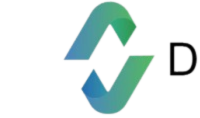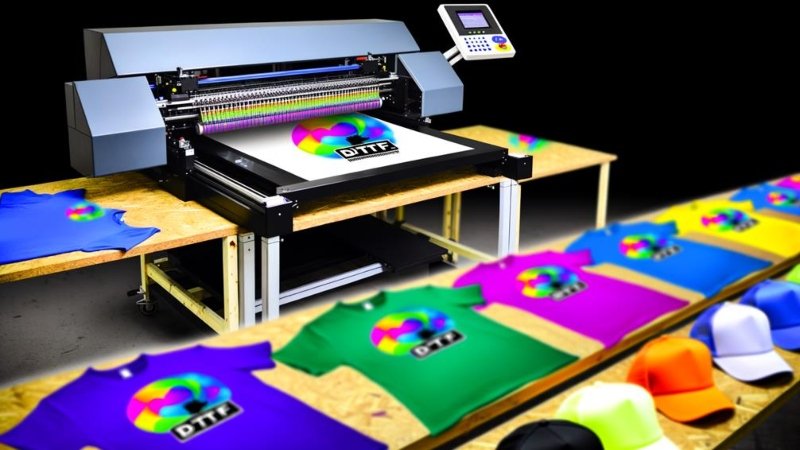In the custom printing industry, Direct-to-Film (DTF) printing has emerged as a popular choice for businesses looking to deliver high-quality, cost-effective prints at scale. This innovative method allows for intricate designs, vibrant colors, and durable results, all without the hefty price tag associated with traditional printing techniques like screen printing or direct-to-garment (DTG) printing.
Whether you’re a small business owner or managing a large-scale production, understanding the cost-effectiveness of DTF printing for high-volume orders can help you make an informed decision. In this article, we’ll explore the key factors that make DTF printing a financially savvy option for bulk printing, how it compares to other printing methods, and how you can maximize savings when working with large orders.
What is Direct-to-Film (DTF) Printing?
DTF printing involves transferring a design from a digital file onto a special film, which is then transferred onto a garment or other printable surfaces. Unlike screen printing, which requires creating physical stencils for each color, DTF printing uses a digital process, making it faster, more versatile, and more efficient. The process includes printing the design onto the film, applying adhesive powder, curing the print, and transferring it to the fabric using a heat press.
This method is particularly ideal for custom apparel businesses or print-on-demand services, as it allows for complex designs and full-color printing without the need for extensive setup. The low initial investment and minimal setup time make DTF printing an appealing choice for high-volume orders.
Key Factors that Affect the Cost of DTF Printing
When evaluating the cost-effectiveness of DTF printing for high-volume orders, several factors come into play. Understanding these can help you better plan your budget and ensure maximum savings.
1. Equipment Costs
To get started with DTF printing, you’ll need a few essential pieces of equipment: a printer, a heat press, adhesive powder, and transfer film. While the upfront costs may seem high, they’re often far more affordable than those associated with screen printing. For instance, the Epson Surecolor G6070 DTF printer is a popular choice among businesses due to its reliability, quality, and cost-effectiveness for high-volume production. It’s a direct-to-film printer that delivers sharp, vibrant prints with minimal setup time, which helps reduce operational costs.
Another benefit of DTF printing is that you don’t need to invest in costly screens or stencils, unlike screen printing. The digital nature of DTF means that you can switch between designs with minimal effort, making it easier and faster to scale production.
2. Material Costs
The materials involved in DTF printing are relatively inexpensive compared to traditional methods. DTF printers use special transfer films, adhesive powder, and ink, all of which are available at competitive prices. When you purchase these materials in bulk, you can significantly reduce your per-print cost.
For example, buying high-quality transfer films and ink in bulk can lower material costs for each order. Plus, the film itself is versatile, allowing you to print on various fabrics, from cotton to polyester, without needing specialized treatments. This versatility helps streamline production and eliminate the need for separate materials for different types of fabrics.
3. Labor Costs
Another key factor that contributes to DTF printing’s cost-effectiveness is the reduction in labor costs. Traditional printing methods like screen printing require a multi-step process, with labor-intensive tasks like manual setup, cleaning screens, and multiple stages of ink application. In contrast, DTF printing allows for a more streamlined workflow.
DTF Printing in High-Volume Production
DTF printing is ideal for high-volume production. Here’s why:
1. Faster Turnaround Time
Compared to traditional methods like screen printing, DTF printing offers faster turnaround times, especially when producing multiple designs. The digital nature of DTF printing means that once the design is created, the print process is quick, with minimal setup required. This makes it a fantastic option for businesses with tight deadlines or those that need to process large quantities of orders.
Unlike screen printing, which requires creating a separate stencil for each color, DTF printing allows you to produce detailed, full-color prints in a single pass. This efficiency helps reduce production time, which ultimately leads to a faster time-to-market for high-volume orders.
2. Flexibility for Small-Batch and Custom Orders
DTF printing is particularly well-suited for businesses that handle both small and large orders. The ability to print multiple designs on a single batch means you can offer customization without raising production costs. For businesses involved in print-on-demand services, DTF offers a great solution for fulfilling small-batch orders with intricate designs at a lower cost than traditional methods.
In contrast, screen printing is less efficient for custom or small orders because the setup time and costs involved can make it prohibitively expensive for low-volume printing. DTF eliminates these issues, making it a more cost-effective solution for companies with diverse customer needs.
DTF vs. Other Printing Methods: A Cost Comparison
When comparing DTF printing to other methods like screen printing and DTG printing, it’s clear that DTF offers several cost advantages, particularly for high-volume production.
DTF vs. Screen Printing
Screen printing is well-suited for large orders with a single design, but the costs can add up quickly when producing multi-color or custom designs. Each color requires a separate screen, and the process can be time-consuming. On top of that, there’s a higher material cost for ink and stencils. In contrast, DTF printing allows for multi-color designs in a single pass, without the need for separate screens, making it a more cost-effective choice for high-volume, custom orders.
DTF vs. DTG Printing
Direct-to-garment (DTG) printing is another popular method for custom apparel. While it offers high-quality prints and is ideal for small orders, it typically comes with higher per-unit costs for large orders. DTG printers require significant maintenance and ink costs, and their speed can be slower than DTF printing, particularly when handling multiple designs. DTF printing, on the other hand, offers a faster, more cost-efficient process for bulk orders with a variety of designs.
Maximizing Savings in High-Volume DTF Printing
To maximize the cost-effectiveness of DTF printing, consider these strategies:
- Bulk Purchasing: Buy transfer films, inks, and adhesive powders in bulk to lower per-unit material costs.
- Optimize Workflow: Streamline your design and printing process to reduce waste and downtime.
- Invest in Efficient Equipment: A reliable printer, such as the Epson Surecolor G6070 DTF printer, will improve efficiency and reduce long-term operational costs.
Conclusion
DTF printing offers a cost-effective solution for businesses looking to fulfill high-volume, custom printing orders. With lower equipment costs, reduced material expenses, and minimal labor requirements, DTF printing is a smart choice for scaling production while maintaining quality. Whether you’re printing t-shirts, promotional items, or custom gifts, DTF printing enables you to meet customer demands efficiently and affordably. If you’re ready to get started with high-volume printing, DTF could be the game-changer your business needs. At Disquantified.com, we believe that true creativity begins with the heart, and when shared with purpose, it can leave a lasting mark.

